SCG Chartered Accountants (SCG) is not my first venture into self-employment.
That was SCG Consulting, which focused on implementing and supporting Pastel accounting and payroll as its primary business. We made a bet back then that technology was the future!
We were accountants, and setting up an accounting firm would have been natural. That’s what most Chartered Accountants do – open an audit firm. Audit as a business was abhorrent to us. I had an aversion to audit as a business venture and opposed the idea whenever it came up!
However, we reassessed our business model in 2008 and came to appreciate the potential of an audit business. And so, SCG Chartered Accountants was born.
My partner at the time, Justice Lartey, was better suited for the existing business. I took on the challenge. So here I was, the opponent having to build the dreaded business!
When you must deal with something you dread, what do you do? Jump right in? Although I had the cushion of some cash flow from the existing business, I chose not to. Instead, I assessed, planned and took anxious steps.
The assessment started with the question “what do the successful firms do?” I deduced answers and defined a vision and a broad strategy.
So, what did I learn?
1. You, like most entrepreneurs, may end up with a dysfunctional, unprofitable business.
Michael Gerber calls this mistake the “E-Myth”, or Entrepreneurial Myth. This is the:
- myth that most people who start small businesses are entrepreneurs.
- fatal assumption an individual who understands the technical work of a business can successfully run a business that does that technical work.
Some symptoms of an E-Myth situation are: the entrepreneur become a slave to business and works very hard to stand still; things don’t work when he is not there, and he is broke and often anxious about how to pay the bills. The passion dies, yet he can’t leave so he keeps plodding on.
People start a business based on their technical skills and know little about other functions. For example, when you start a business you are in charge of finance, managing people, operations and much more. You may not have experience in all these areas. This is the E-Myth syndrome.
We had that experience in SCG Consulting – working hard, struggling with cash and staff. In the early days of the audit firm, I focused on building the technical foundations of the business and getting clients. I didn’t give attention to other aspects of the business. My accounting system was soon a mess and we had staffing issues – all classic signs of the beginnings of an E-myth situation.
The lightbulb moment came when I read the “E-Myth Accountant: Why Accounting Firms Don’t Work and What to Do About It” by Michael Gerber and Darren Root. In that book, the authors revealed the cause of the problem and proposed solutions for dealing with it. I put the ideas into practice and I am still working on the recommendations of Gerber and Root to this day.
Lesson: As an entrepreneur, you must be ready to learn about areas not in your wheelhouse, or find help. You must make time to work on the business, e.g. create systems. Don’t spend all the time working in the business. If you don’t do that you’ll have a dysfunctional business, you’ll struggle for cash, and this will stress you out.
2. Vision and Strategy
As I said earlier, I dreaded running an audit firm. Before I made any moves, I tried to find answers to the question “what do the successful firms do?” I also analyzed the needs and players and created a vision and strategy to achieve.
I think it’s important when you think of starting a business to ask “why?” Why did you choose that business? Why would anyone buy from you?
You should also do an analysis of the competition – who are the players and their strengths and weaknesses? What targets do they focus on? With these insights, you should develop an outline of how you’ll get into the market.
Lesson: It’s important to do an analysis of the market and competition, and define a vision and strategy to achieve your goals. The vision and strategy is your map. Without a map, how do you know whether you are on course?
3. A basic HR system is vital
I gave recruiting and training, aspects of HR systems, a lot of thought. I didn’t think about other aspects of HR. This was not a problem at the start. However, once the firm grew and we recruited, it soon became one.
Some symptoms of an HR problem are general dissatisfaction, inconsistently dealing with issues that arise because there is no policy, and these issues preoccupying your time as the entrepreneur.
Lesson: Accounting is a people business, and if the size of the firm does not merit an in-house person it helps to have an HR person define basic policies to guide the business in the beginning. This is a lesson learned in hindsight.
4. Process
A process is the sequence of activities done to achieve an output. To gain control, you must define standard procedures for doing different things in the business that everyone must follow. If you don’t, you allow each person to create his own way of doing the same job. This is a recipe for disorder.
You know you don’t have a process when output varies depending on who does the work and when things don’t get done on time.
Other signs include people playing the blame game, when it’s difficult to hold people responsible, and when there’s disorder and unhappiness.
Lesson: You must define standard procedures for how things get done. You’ll have chaos if you don’t have standard processes. As the business grows or changes, you must revise your processes.
In part two, I deal with the additional lessons I’ve learned over the past ten years.
Written by: George Katako
George is the Managing Partner of SCG Chartered Accountants.

